Lieutenant William Reid's papers are held at the Royal Air Force Museum, London. He was shot down by Immelman - inventor of the legendary 'Immelman Turn' air combat manoeuvre- on 1 August 1915.
He was then being held prisoner at Fürstenburg, Germany). According to this source, this was: "A small town fifty miles north of Berlin. The officer prisoners are quartered in a well-known summer hotel or Erholungsheim, with a good view over the surrounding country and lake, a mile from the town. It has a glass verandah and the grounds are considerable. Walks are permitted."
On 4 June 1916, the card indicates that Reid was transferred to Switzerland - in other words, he was interned. Reid was in the first group of British prisoners of war held by the Germans to be interned in Switzerland. His letters home (as I mentioned, held in the RAF Museum's archives) suggest that officer internees had a relatively easy life. On arriving in Switzerland, Reid wrote to his parents to request clothes, 1000 cigarettes, Gilbert and Sullivan records for his gramophone, his camera and his butterfly collecting equipment! He seems to have spent most of his time in Switzerland catching butterflies, playing tennis and bridge, dancing, going to tea and having picnics. Of course it is possible that he omitted to mention any hardships in order to prevent his family from worrying!
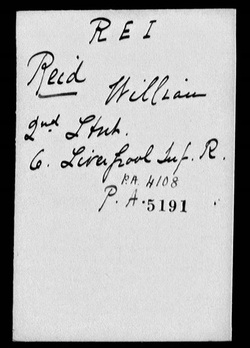
(Image at left courtesy of ICRC).
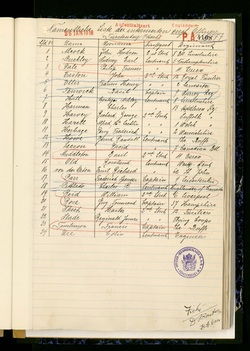
Below is a detail of the section showing Reid's entry.
Both images courtesy of ICRC.
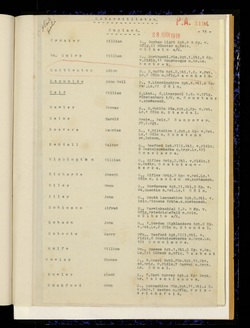
Again, below is a detail of the section showing Reid's entry.
Both images courtesy of ICRC.
Regarding Reid himself, as he was an air war casualty, and due to the fame of the man who shot him down, there is considerable relevant (and reliable!) information available on the internet. Here is a diary from a member of Reid's RFC squadron (No.2) that records that unit's actions on the day he was shot down: "1 August 1915. Lt.s Reid, Leather & I ascended at 5.0 am with six bombs each to drop on Vitry aerodrome... At the time of writing Lt. Reid has not returned. 2 August 1915. The Germans dropped a message last night over the French lines saying that Lt. William Reid is a prisoner & wounded in two places in the left arm but not seriously. He was hit by anti-aircraft fire." (see the source website for an explanation about the mention of anti-aircraft fire).
And here is an interesting newspaper article from the Ilkley Gazette that gives more details about Reid's wartime and post-war life. It describes how in 1920 he gained second place in a motorcycle race despite the persisting effects of his wartime injuries to his elbow. Apparently Reid fired about 60 shots before his gun jammed. He then flew with his left hand and fired a pistol with his right. He was hit four times in his left arm, and lost his engine. After Reid had crashed, Immelmann landed near him and took him prisoner.” The article quotes his grandson, who confirms that Reid "was interned both in POW camps and Switzerland, having been deemed by the Germans to be unfit to be of any use in further active service." He add “He married his Swiss-Italian nurse whilst in Switzerland and on his return to England he taught the Queen’s father to fly, at RAF Cranwell."
So there you have it: an interesting set of records that allows us to trace the story of an individual prisoner of war who was held by the Germans and then interned in Switzerland.
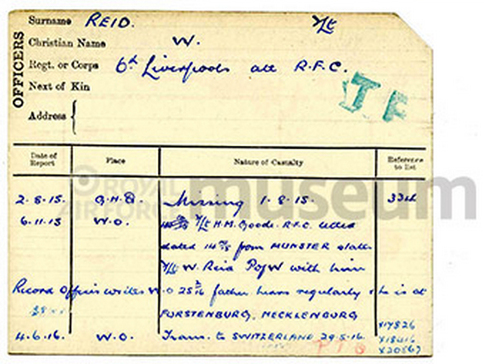
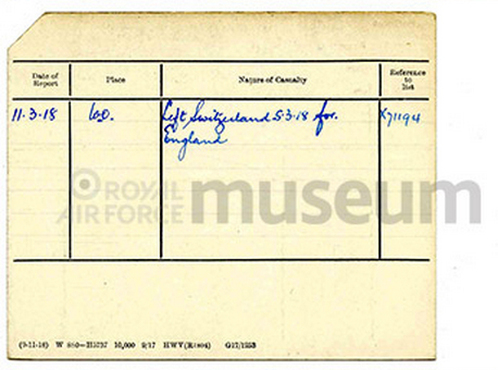

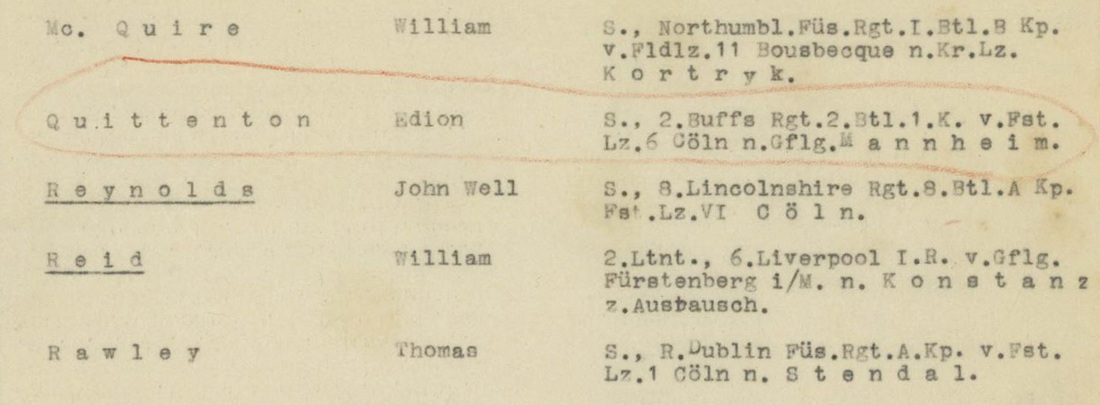
 RSS Feed
RSS Feed
